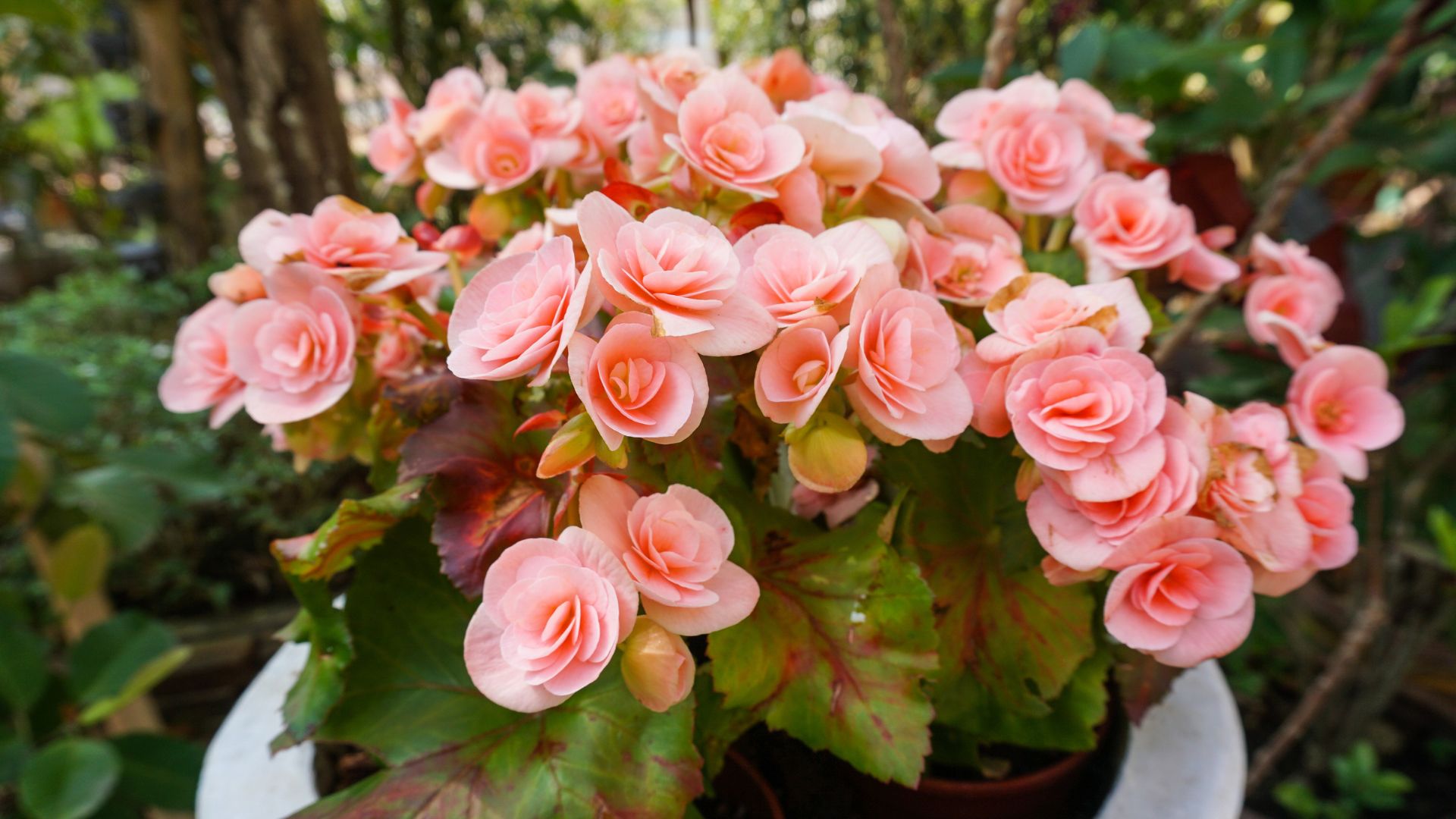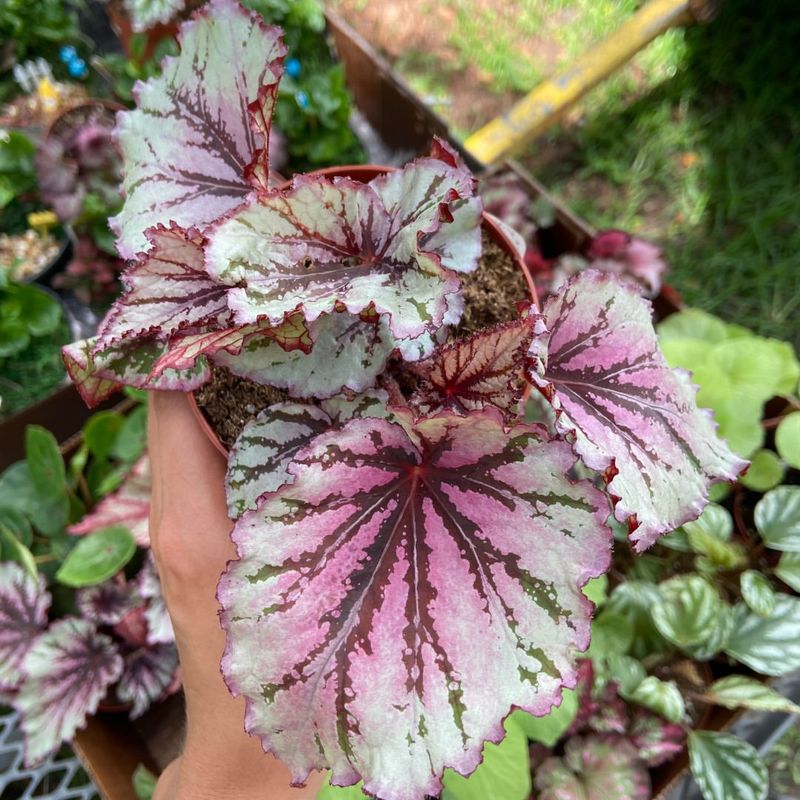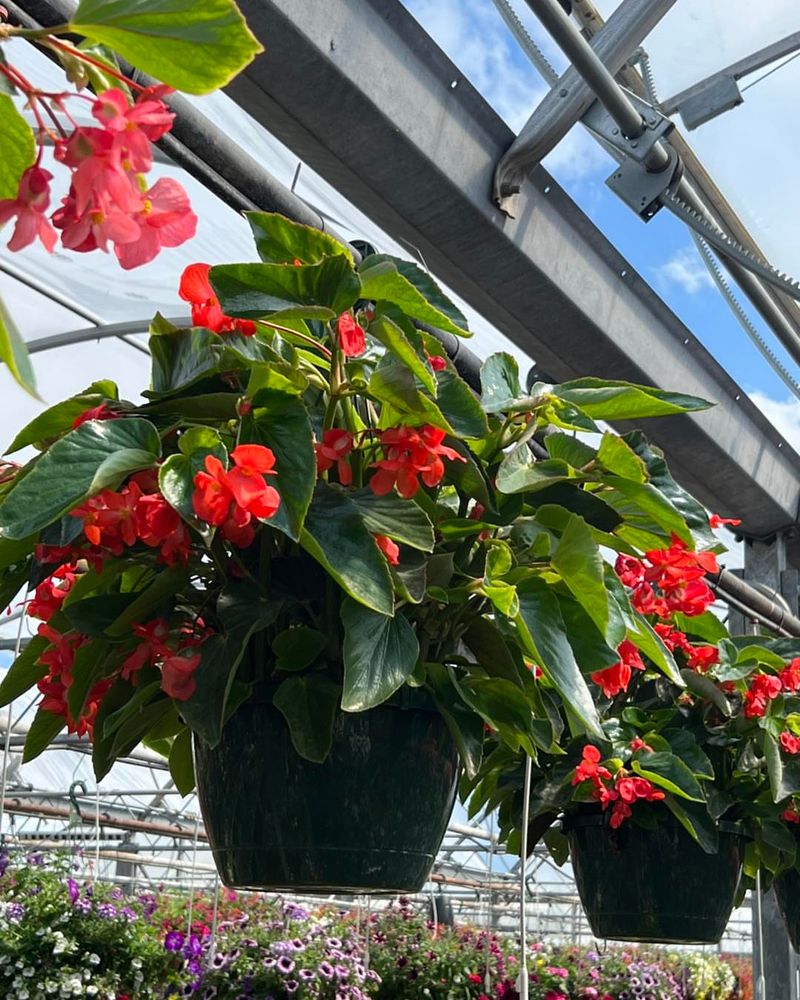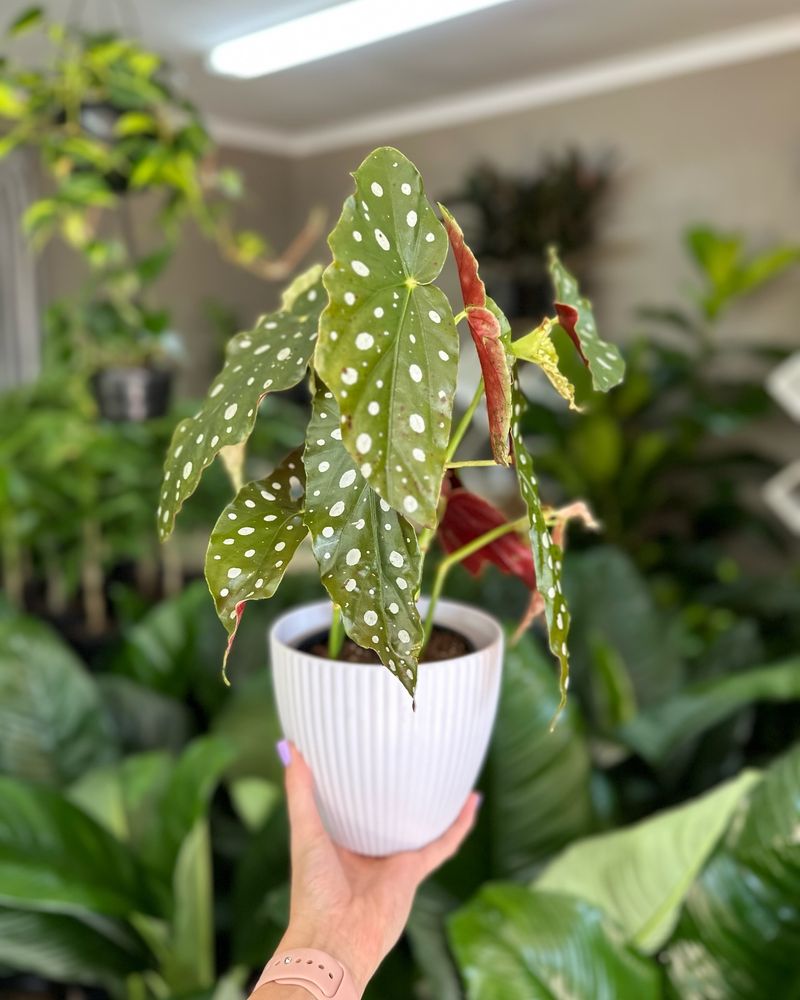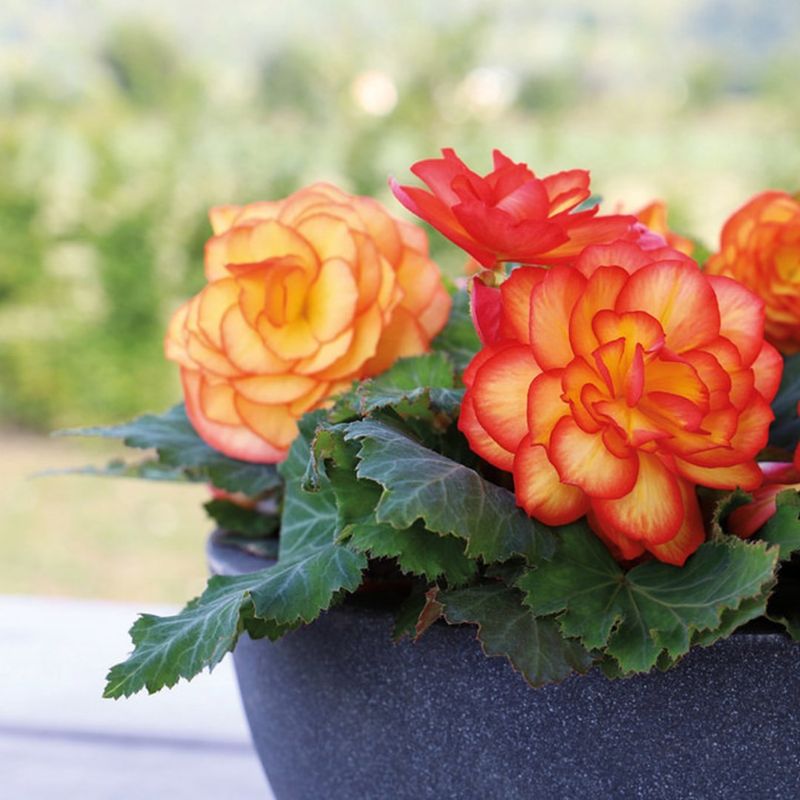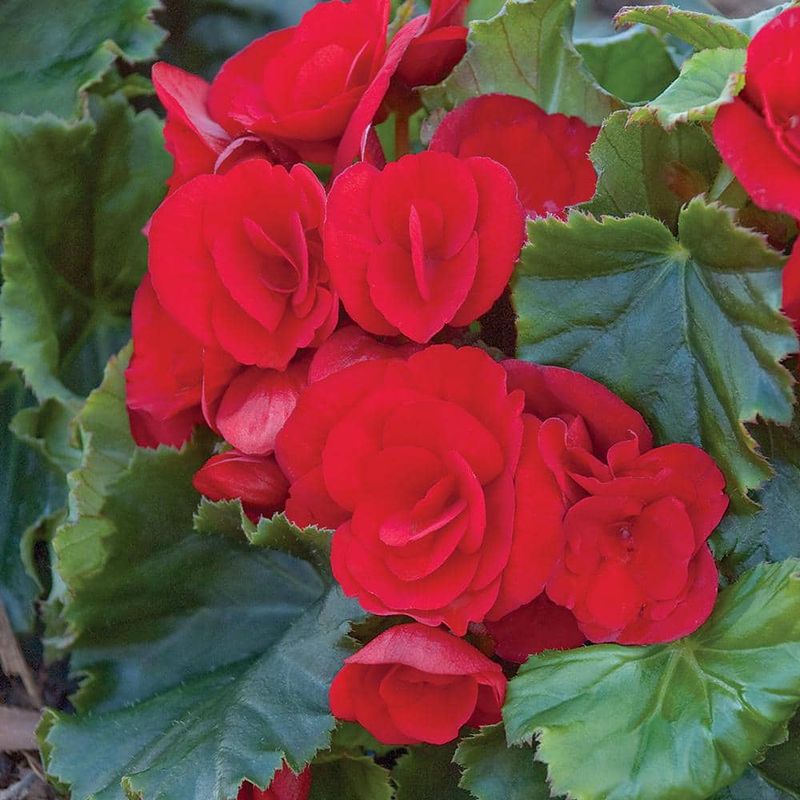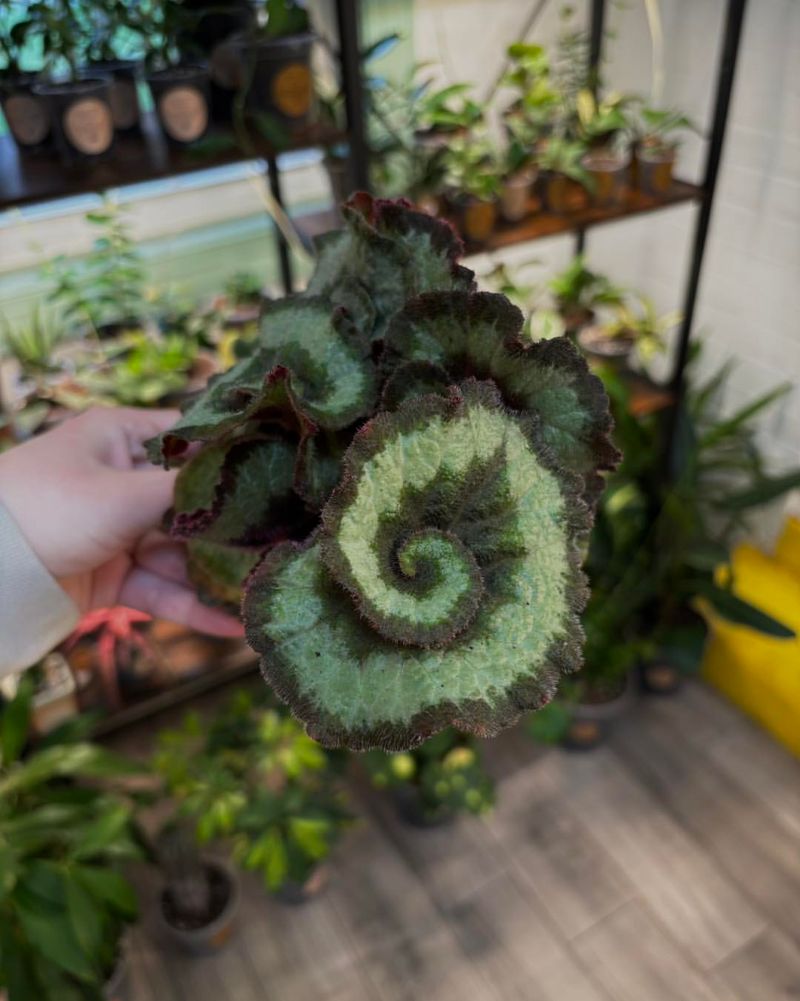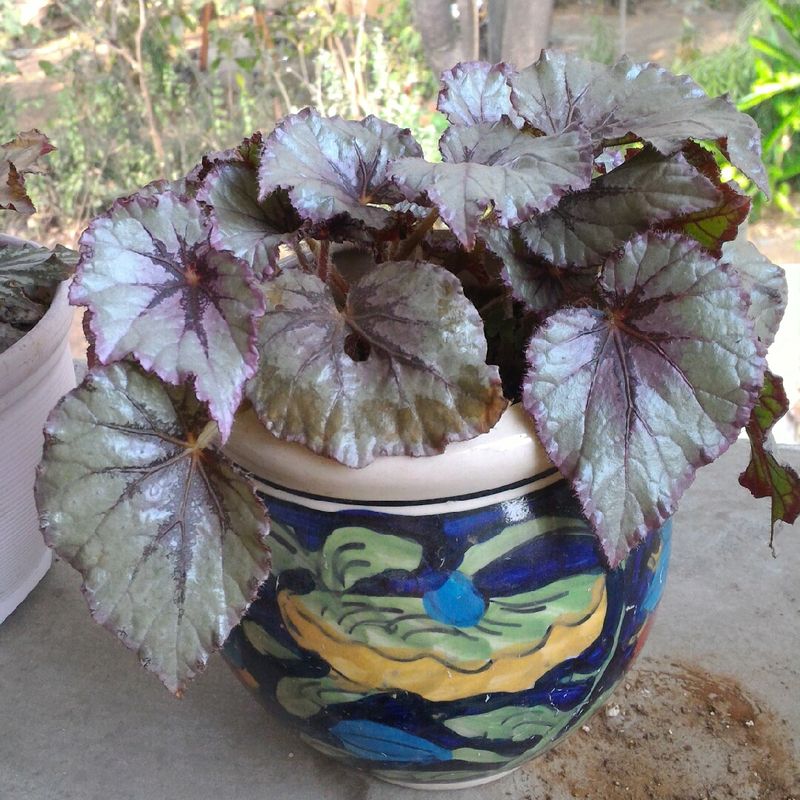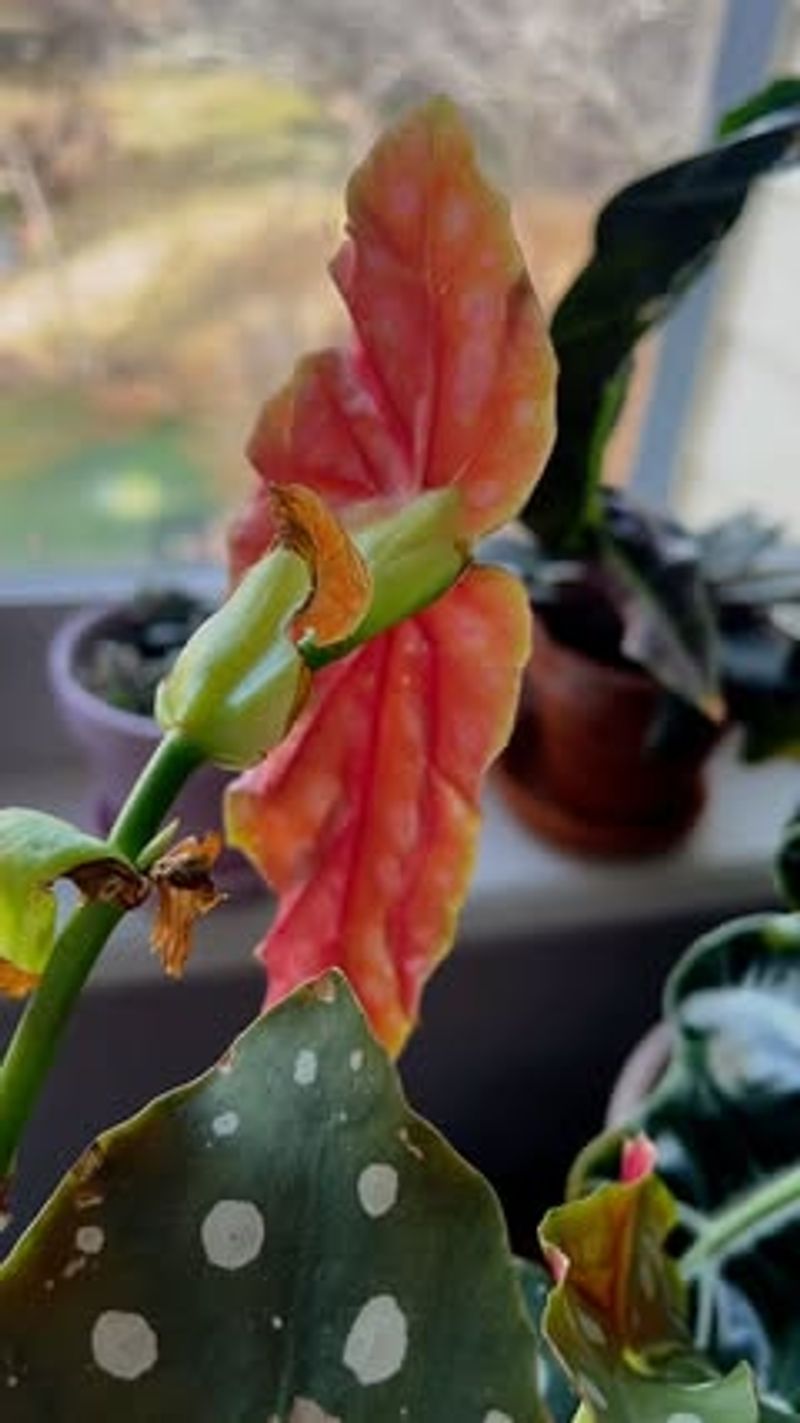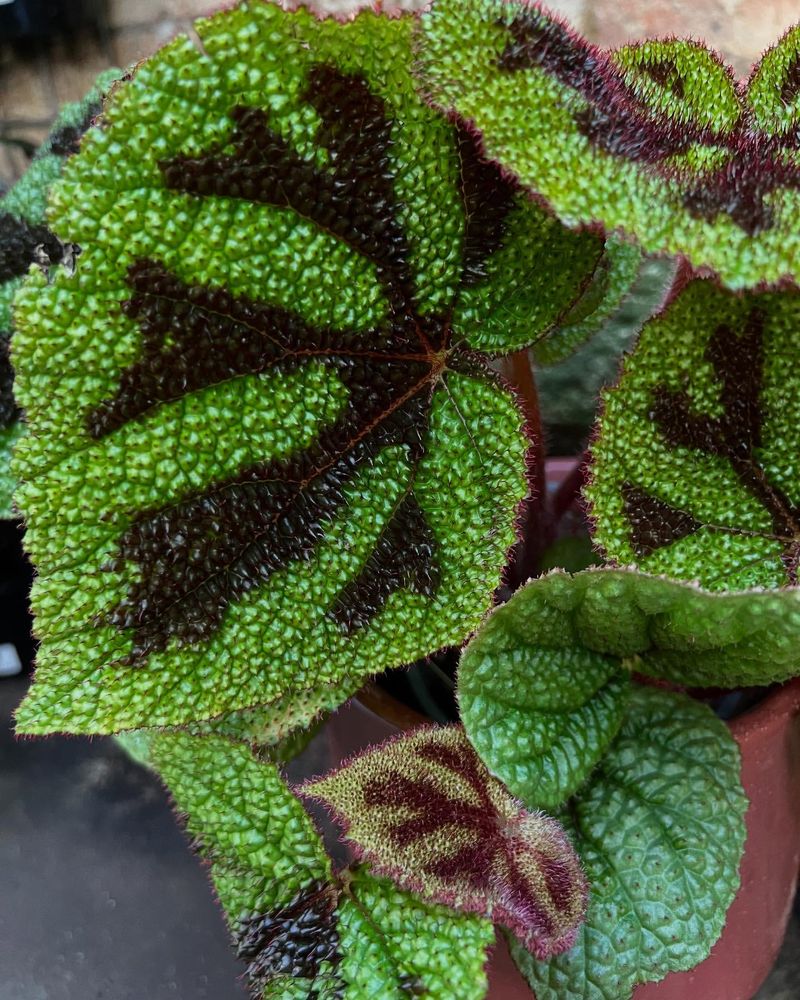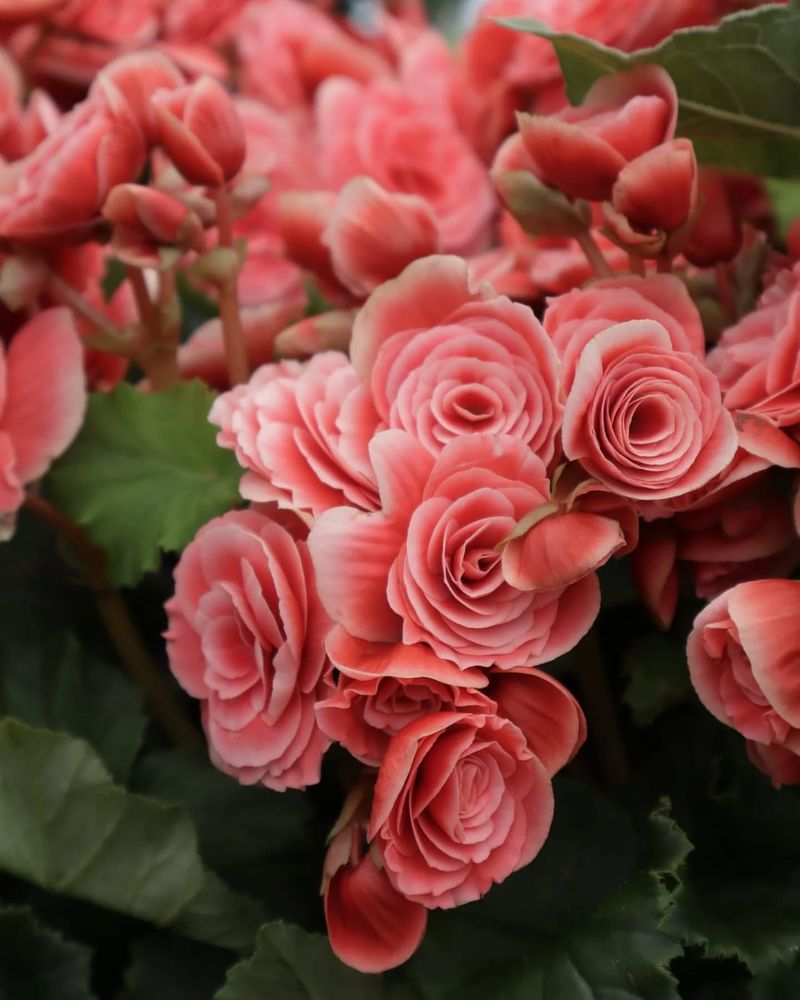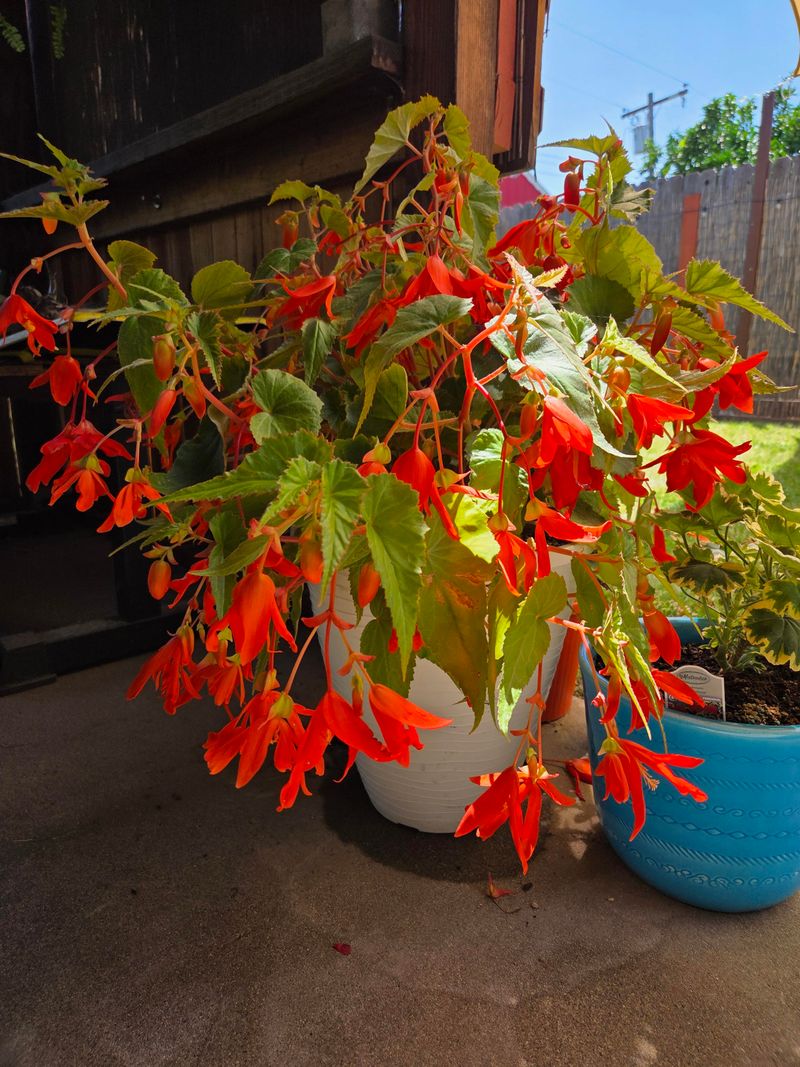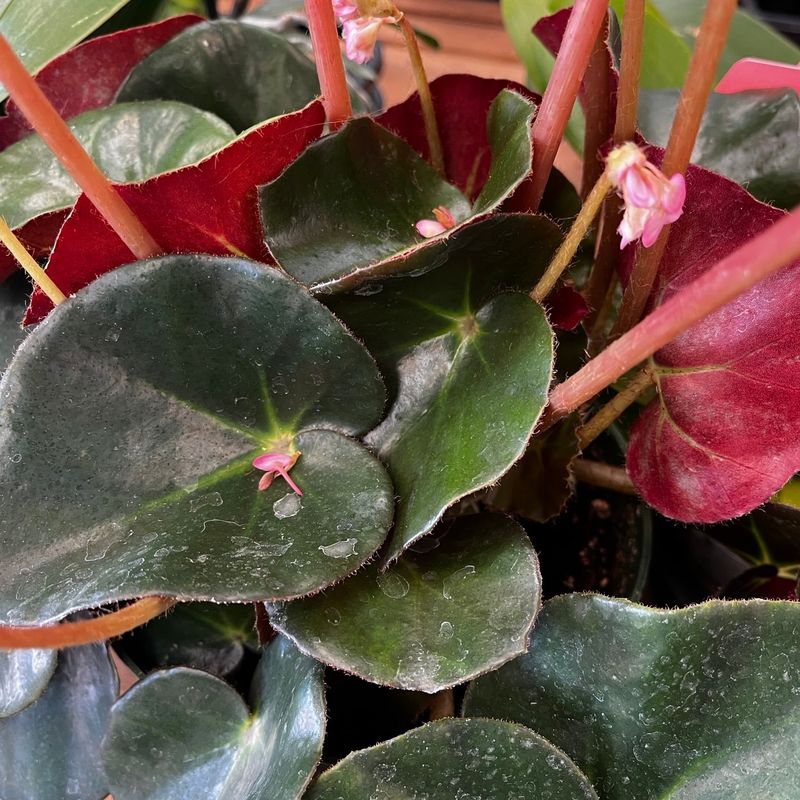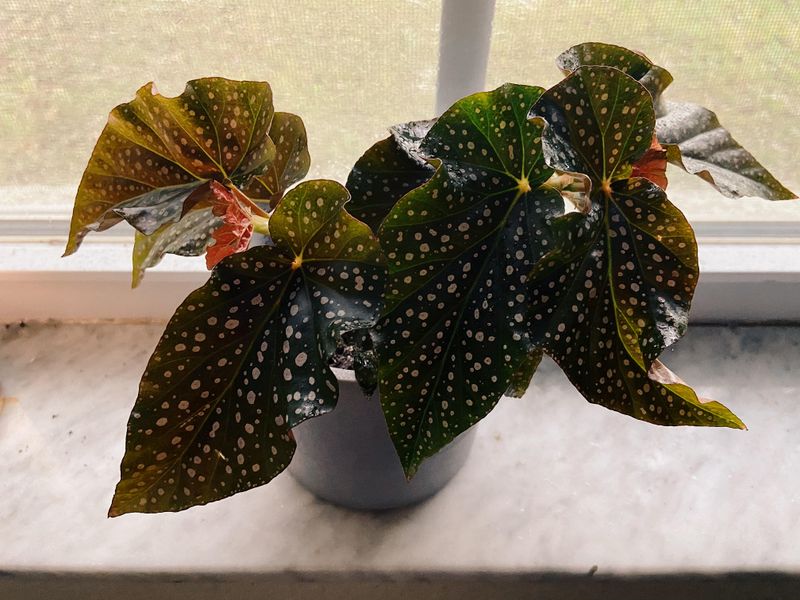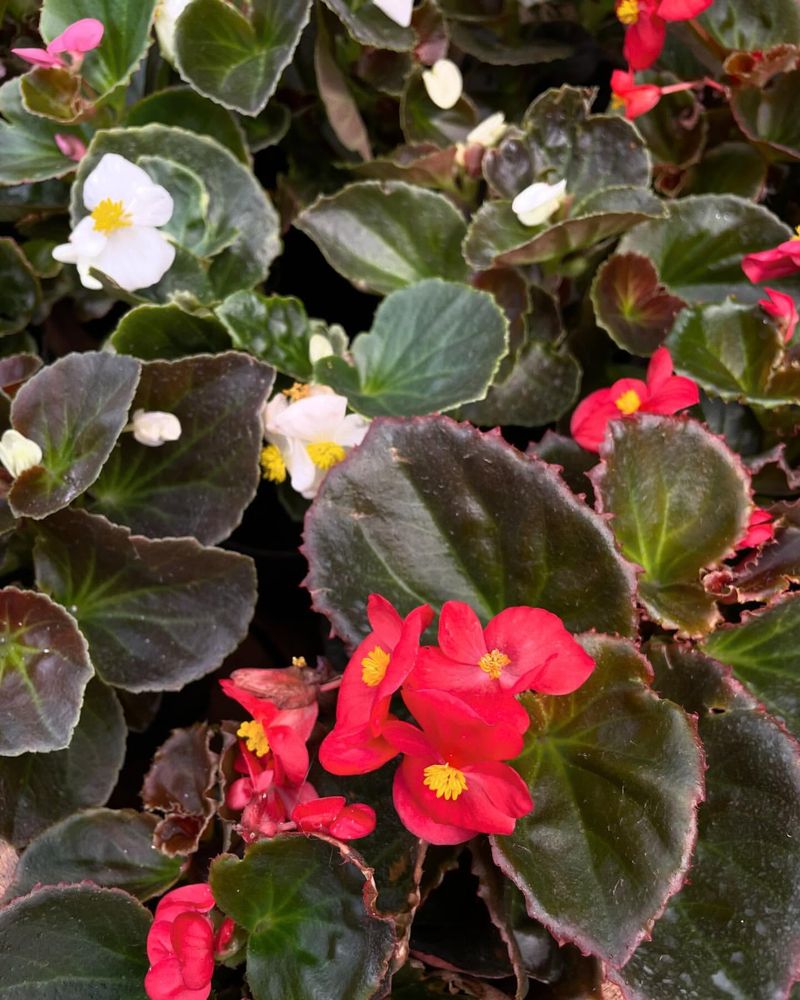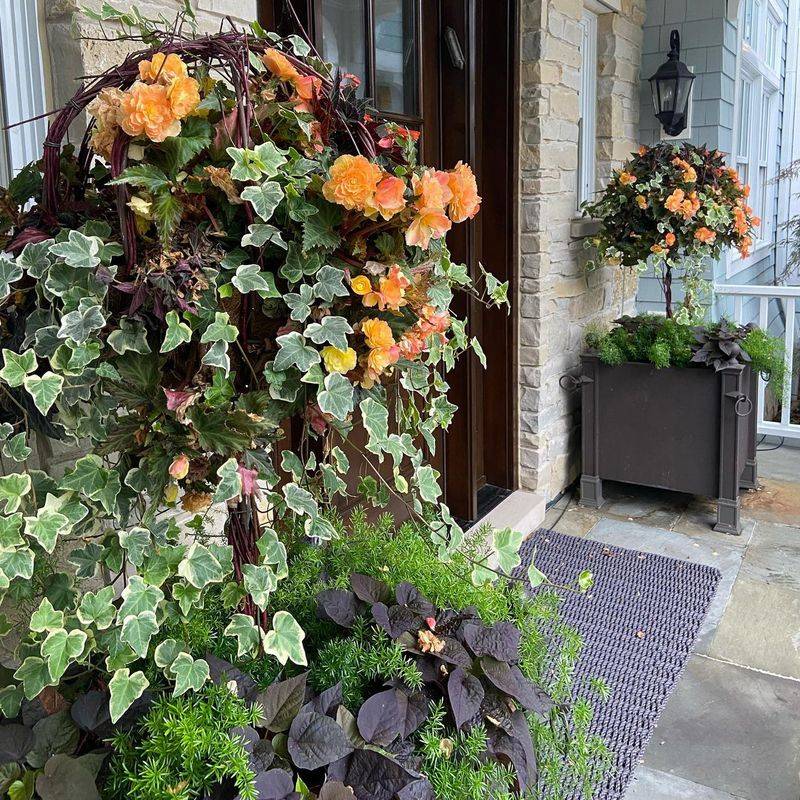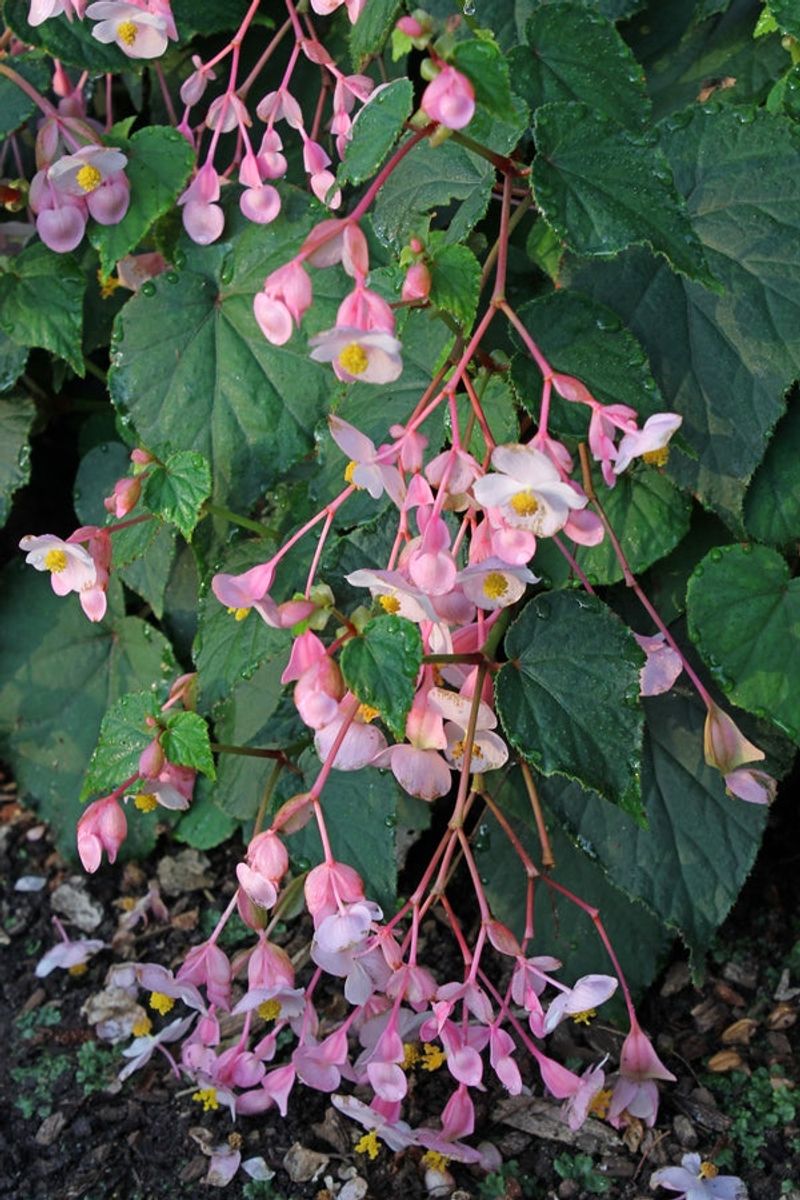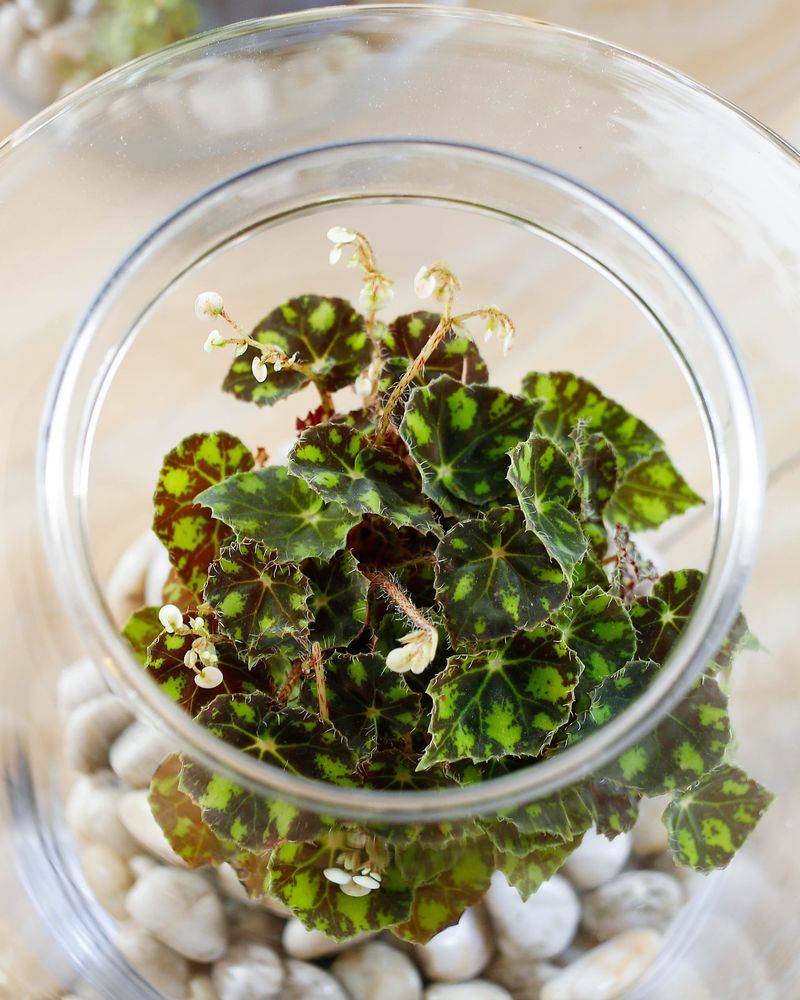Begonias are back in the spotlight—and with good reason. From shady corners to sunny porches, these adaptable plants bring rich color and texture wherever they’re planted. They offer an easy win for gardeners who want style without the struggle.
Whether you’re drawn to bold angel wings or tidy bedding types, begonias deliver non-stop charm. Their varied shapes, sizes, and leaf patterns mean there’s truly something for every taste and space—no matter how big or small.
With steady blooms and striking foliage, these floral favorites turn plain spots into garden highlights. All it takes is a little care and the right placement, and begonias will reward you with color that lasts season after season.
1. Rex Begonia
The foliage steals the show with swirls of silver, pink, red, and green that create living art in shady corners. Each leaf develops its own unique pattern, making every plant one-of-a-kind.
Grows best in indirect light and humid conditions, mimicking its natural rainforest habitat. I’ve found they thrive in bathrooms with filtered light.
While they can be a bit fussy about watering, the spectacular leaves make them worth the extra attention.
2. Dragon Wing Begonia
Arching stems cascade with glossy, wing-shaped leaves and clusters of red or pink flowers that never seem to stop blooming. The pendulous growth habit makes them perfect for hanging baskets or tall containers.
Unlike some fussy varieties, these tough plants handle heat and humidity like champions. Last summer, mine flourished despite weeks of 90-degree temperatures.
The vigorous growth quickly fills spaces in the garden, reaching up to 2 feet tall with an equal spread when happy.
3. Polka Dot Begonia (Begonia maculata)
Silver spots decorate olive-green leaves in a pattern that looks almost deliberately painted. The undersides reveal deep red coloration that adds another dimension of interest.
When happy, they produce delicate white flowers that contrast beautifully against the dramatic foliage. My plant started as a small cutting and now commands attention in my living room.
Although technically houseplants, they can vacation outdoors in summer shade, returning indoors before temperatures drop below 55°F.
4. Tuberous Begonia
Double-flowered varieties resemble small roses or camellias, producing blooms up to 6 inches across in colors from white to yellow, orange, pink, and deep red. The flowers continue for months with minimal deadheading.
These showstoppers prefer cool, partially shaded locations where they can be protected from hot afternoon sun. Morning light brings out their best colors.
Dig up and store tubers in fall for zones below 9, or treat as annuals. I’ve successfully stored mine in paper bags with peat moss for years.
5. Rieger Begonia
Compact plants become completely covered with clusters of semi-double flowers in vibrant colors. Often sold around holidays, these beauties can transition to summer gardens with proper care.
The dark green, slightly crinkled leaves provide a perfect backdrop for the abundant blooms. When placed in morning sun and afternoon shade, they’ll flower continuously for months.
Originally bred as disposable gift plants, they can actually thrive for years with regular fertilizing and proper light. My three-year-old plant still produces waves of coral blooms every few months.
6. Escargot Begonia
Named for its distinctive spiral pattern that resembles a snail shell, each leaf unfurls with a hypnotic swirl of silver and green. The intricate pattern develops best when grown in bright, indirect light.
These conversation-starters perform beautifully in terrariums or glass cabinets where humidity stays high. The compact growth makes them perfect for small spaces.
Despite their exotic appearance, they’re relatively straightforward to grow once you understand their preference for consistent moisture without waterlogging. I’ve kept one thriving for years on a north-facing windowsill.
7. Painted-Leaf Begonia (Begonia rex-cultorum)
Every leaf tells a different color story with splashes of silver, burgundy, pink, and green creating living masterpieces. The irregular patterns mean no two plants look exactly alike.
Prefers bright, indirect light that enhances their colors without scorching the delicate leaves. A north-facing window typically provides ideal conditions.
Keep soil consistently moist but never soggy. These plants taught me the value of bottom-watering to prevent leaf spotting from overhead irrigation.
8. Angel Wing Begonia
Cane-like stems support spotted, wing-shaped leaves that can reach impressive heights of 3-6 feet when mature. The spotted foliage alone is worth growing, but the cascades of pink or red flowers add another season of interest.
Hanging clusters of blooms appear most heavily in spring and fall, attracting hummingbirds when grown outdoors. The flowers last for weeks with minimal care.
Passes the beginner test with flying colors – these forgiving plants bounce back even after occasional neglect. My oldest specimen has survived three moves and countless pruning sessions.
9. Iron Cross Begonia
Each leaf features a distinct chocolate-brown cross pattern set against bright green background, creating one of the most recognizable begonias available. The unusual markings develop best in bright, indirect light.
Small pink or white flowers appear in spring, but the foliage remains the main attraction year-round. These compact plants rarely exceed 12 inches in height.
Thrives in terrariums or under glass cloches where humidity remains high. After struggling with one for years, I finally succeeded by placing it in a bathroom with filtered light.
10. Elatior Begonia
Masses of flowers completely cover these compact plants in shades of pink, red, orange, yellow or white. The semi-double blooms create a continuous display for months at a time.
Often marketed as seasonal gift plants, they actually make excellent garden additions in dappled shade locations. Their bushy growth habit fills spaces between larger perennials nicely.
Cut back after the initial flowering flush to encourage branching and a second round of blooms. I’ve had plants rebloom three times in a single season with this simple technique.
11. Boliviensis Begonia
Narrow, pointed leaves and a naturally trailing habit make these perfect for hanging baskets and window boxes. The pendulous stems can cascade 2-3 feet when happy.
Trumpet-shaped flowers in orange, red, pink or white dangle from every stem tip, creating waterfall effects of color. Deadheading isn’t necessary as they shed spent blooms naturally.
Handles heat better than many begonia types, though they still appreciate afternoon shade in hot climates. My hanging basket survived 100-degree days last summer with just daily watering.
12. Beefsteak Begonia
Round, glossy leaves with slightly scalloped edges and deep red undersides give this old-fashioned variety its memorable name. The thick, succulent-like foliage stores water efficiently.
Grandmothers have passed these plants down through generations because they’re nearly indestructible indoors. They tolerate lower light levels than most begonias.
Small pink flowers appear in winter when many other plants are dormant. After inheriting a cutting from my great-aunt, I’ve propagated dozens for friends – they root easily in water.
13. Lucerna Begonia
Tall, bamboo-like stems support large, angel wing-shaped leaves spotted with silver. When mature, these impressive specimens can reach 6-8 feet tall, creating dramatic vertical interest.
Clusters of coral-pink flowers dangle from the stems for months, attracting hummingbirds to porches and patios. The blooms appear most heavily in spring and fall.
Despite their impressive size, they adapt well to container growing. My specimen started in a 4-inch pot and now lives in a half-whiskey barrel, creating a tropical feel on my partly shaded deck.
14. Begonia semperflorens (Wax Begonia)
These classic bedding plants form neat, rounded mounds covered with single flowers in white, pink, or red. Bronze-leaved varieties add extra visual interest to garden beds and containers.
Unlike many begonias, these tough little plants can handle full sun in cooler climates, making them versatile for various garden spots. They bloom continuously without deadheading.
Unfussy about soil as long as it drains well, they’re perfect for beginning gardeners. I plant them every year along my front walkway where they perform reliably from spring until frost.
15. Non-Stop Tuberous Begonia
True to their name, these compact plants flower continuously from spring until frost without a break. The large, camellia-like blooms come in a rainbow of colors including bicolors and picotee edges.
Ideal for containers on patios or porches where their dramatic flowers can be appreciated up close. They perform best with morning sun and afternoon shade.
Unlike traditional tuberous types, these improved varieties handle heat better while maintaining the same gorgeous blooms. Last summer, my window boxes overflowed with orange and yellow varieties that stopped neighbors in their tracks.
16. Begonia grandis (Hardy Begonia)
Surprisingly cold-tolerant down to zone 6, this begonia returns year after year from underground rhizomes. The heart-shaped leaves with red undersides create interest even before the flowers appear.
Delicate pink blooms dangle from wiry stems in late summer when many other perennials have finished flowering. They create an airy, woodland effect in shady borders.
Tiny bulbils form in leaf axils in fall, dropping to create new plants. I started with three plants five years ago and now have a delightful colony that mingles beautifully with ferns and hostas.
17. Tiger Paws Begonia
Deeply lobed, star-shaped leaves with distinctive yellow-green veining create a bold textural statement even without flowers. The palmate foliage resembles tiger paws, giving this variety its playful name.
Requires minimal care once established in a bright location with consistent moisture. Unlike fussier begonias, it forgives occasional dry spells with remarkable resilience.
Propagates readily from leaf cuttings placed in water or moist soil. From one small plant purchased three years ago, I’ve created gifts for at least a dozen friends who all report equally easy growing experiences.

